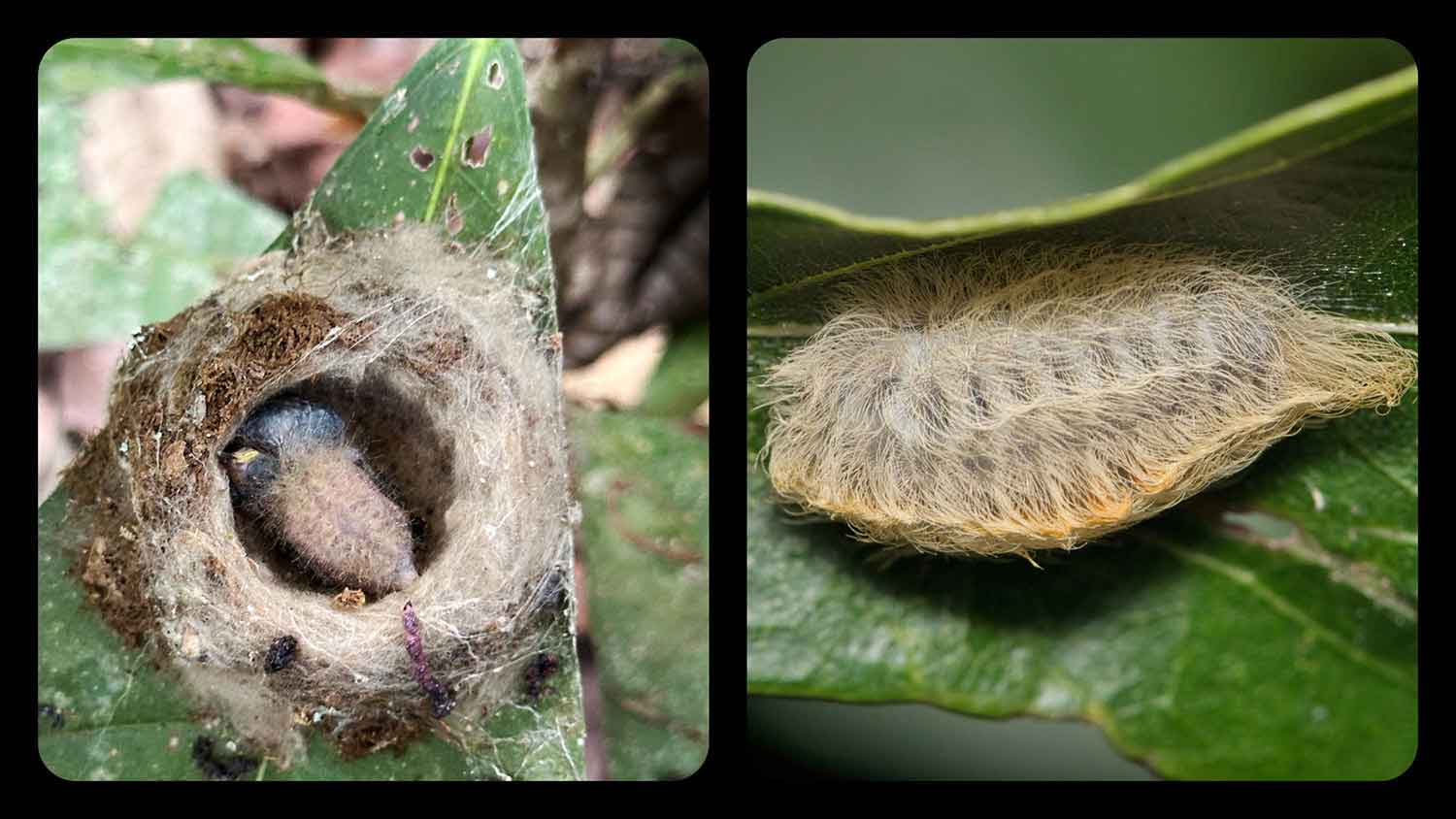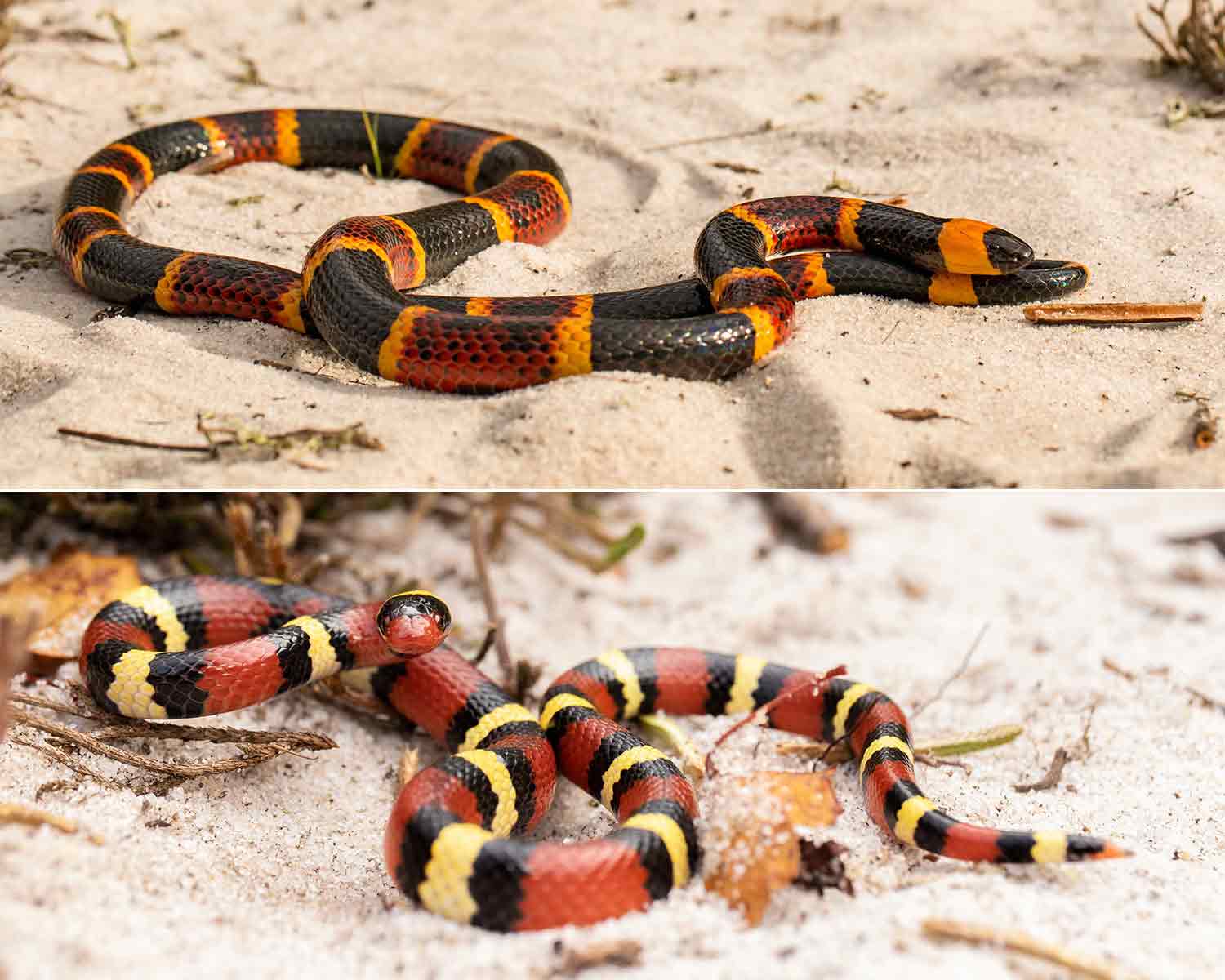A Clever Disguise
One type of hummingbird chick looks a lot like a caterpillar, for a very good reason.

Courtesy of Scott A. Taylor/University of Colorado, © Brett/stock.adobe.com; Composite by Encyclopaedia Britannica, Inc.
White-necked jacobin chicks (left) look and act a lot like some species of caterpillar (right)!
It’s not easy to be a baby bird in a rainforest. Monkeys, snakes, and insects all prey on helpless chicks. But scientists believe that one type of hummingbird chick has an amazing way to scare off hungry predators. It pretends to be a caterpillar!
Scientists made this discovery while observing the nest of a hummingbird species called the white-necked jacobin, which lives in the tropical rainforests of Panama. When one of the eggs hatched, the scientists were surprised that the chick was covered in long brown feathers. Most types of hummingbirds are born without their feathers, which grow in as they get older.
The surprises didn’t end there. As scientists watched the tiny chick, they noticed that it was twitching and shaking its head. They had never seen birds move like this. The chick’s appearance and movements reminded the scientists of a caterpillar.
“I started texting a video [of the chick] to people and asking them, ‘What does this look like?’” Scott Taylor, a scientist who specializes in birds, told the University of Colorado Boulder. “And [they all said], ‘That looks like a caterpillar.’ It was very exciting.”
Taylor and the other scientists began researching caterpillars that live in the rainforest. They found some that are covered in brown hairs, similar to the hummingbird chick’s feathers. These rainforest caterpillars fight off predators by stinging them. The venom, or poison, they deliver can be deadly. They also shake their heads when they feel threatened, just like the hummingbird chick.
The day after the chick hatched, a type of wasp that eats chicks approached the nest. It was then that scientists observed something amazing. The mother bird was away, but the chick was able to defend itself. In response to the wasp, the chick began shaking its head, and the wasp flew away. Scientists now believe that white-necked jacobin chicks mimic, or copy, venomous caterpillars in order to scare predators away.
The scientists are excited to learn more.
“We know so little about what nesting birds do in the tropics,” Jay Falk, a bird specialist who was part of the discovery team, said in a statement. “But if we put more effort into observing the natural world, we might discover these kinds of behaviors are very common.”









